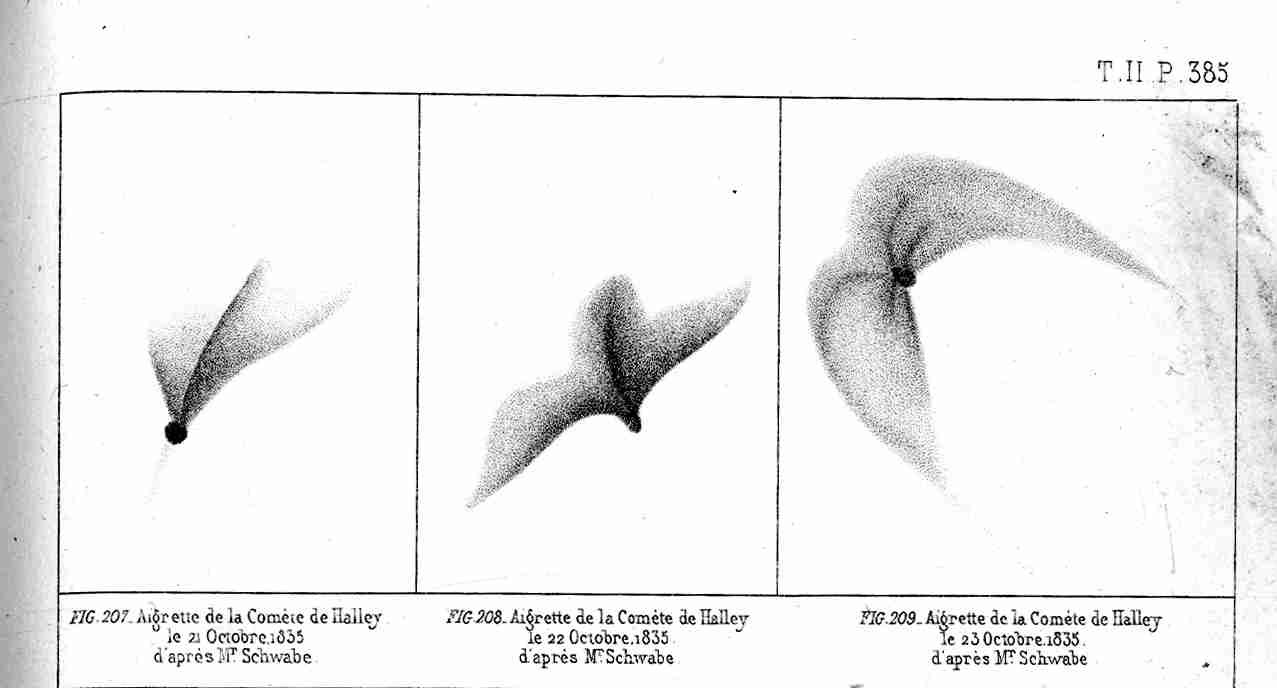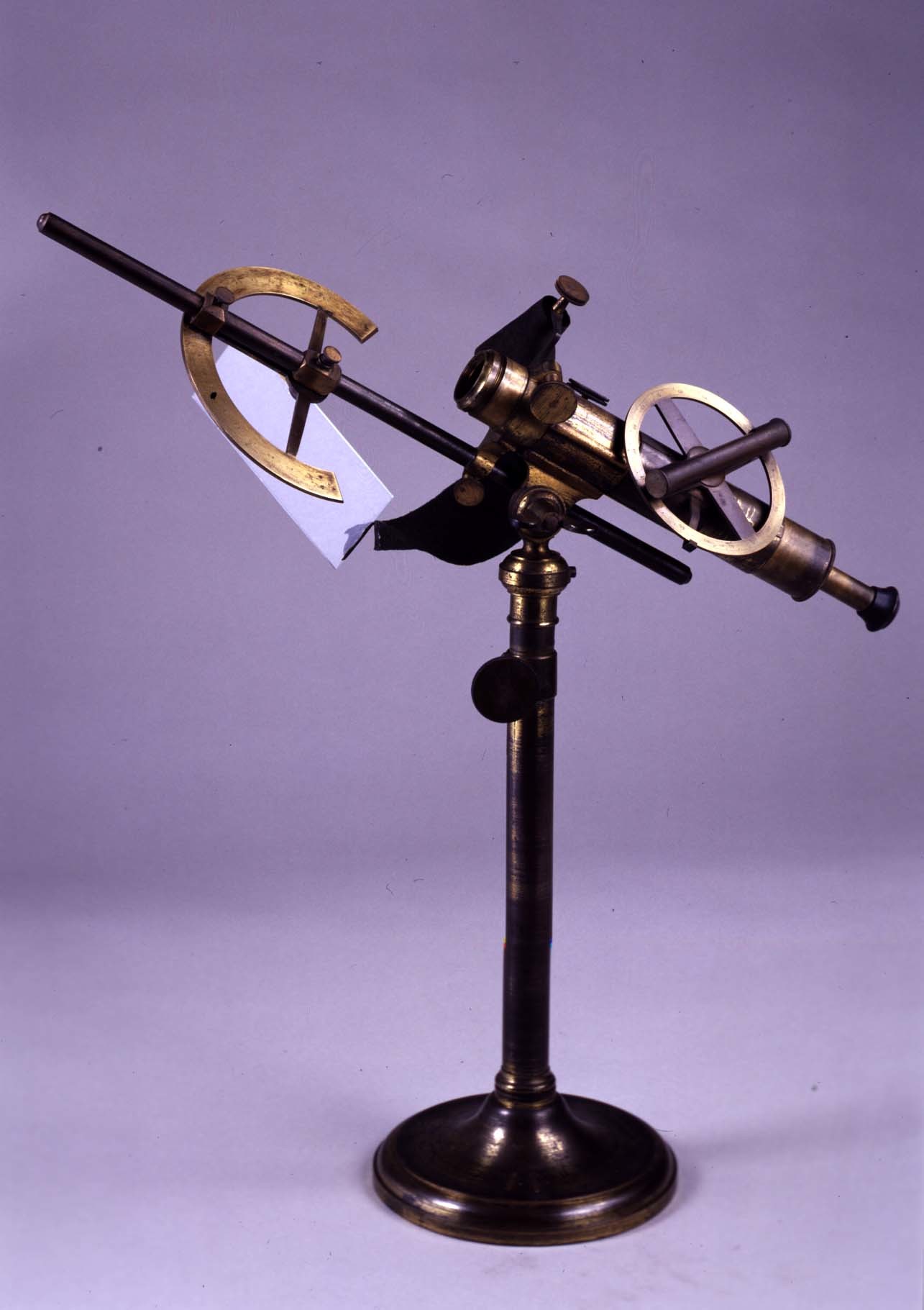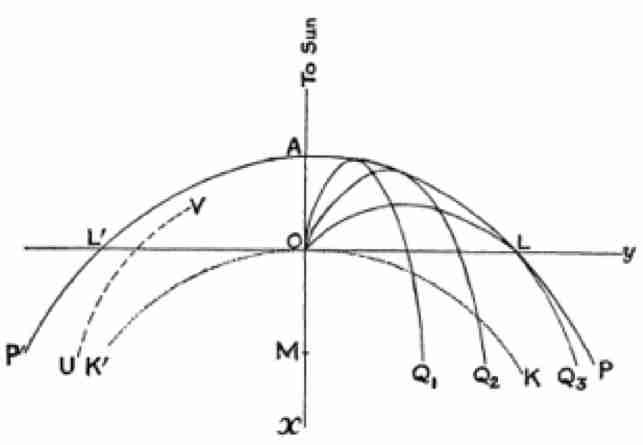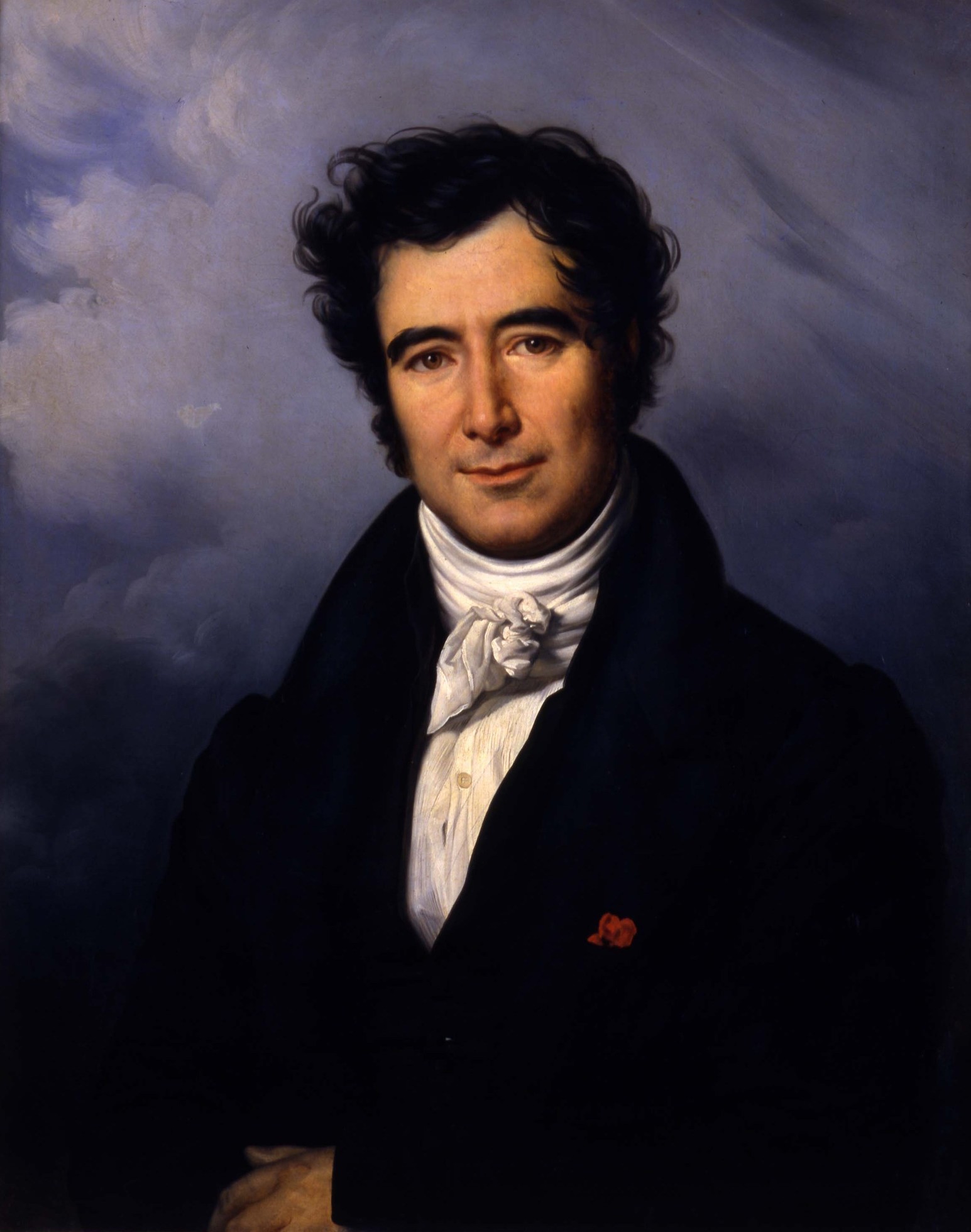Arago was of course not alone in trying to understand the physics of Halley’s comet. Many observations were made, especially in Germany by Heinrich Schwabe (1789-1875) and Friedrich Bessel (1784-1846), a great astronomer better known for having been the first to measure the distance of a star. They noted, in the front of the comet, one or more plumes whose orientation and shape varied from day to day. Bessel suggested that these are plumes of material ejected by the comet as a result of heating by the Sun, and that this matter was repelled by the Sun, describing parabolic trajectories then form the tail.

Dessins de la tête de la comète de Halley, tiré de l’Astronomie populaire / Arago, 1854-1857. Remarquer les aigrettes qui sortent de la tête.
Crédit : Observatoire de ParisThis idea was developed much later by Arthur Eddington (1882-1944), who showed that the appearance of a comet’s head and tail could be explained perfectly well. But one still did not know, at the time of Bessel, the nature of the ejected material and the ejection mechanism. The answer was to come from spectroscopy.

Polarimètre d’Arago, vers 1810. Coll. Observatoire de Paris, inv.204
Crédit : S. Pelly/Observatoire de Paris
